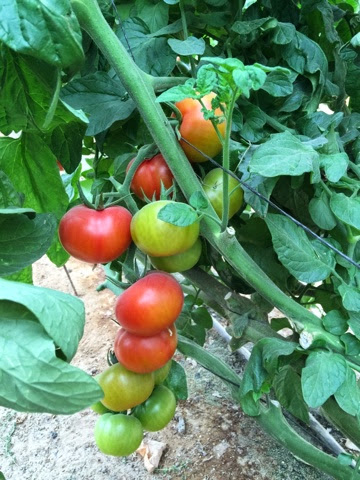Morning in Ein Gedi
Sue helps me through my cable-car height fright phobia and a second later I'm thrilled to be at Masada.
"Masada is a dramatically located site of great natural beauty overlooking the Dead Sea, a rugged natural fortress on which the Judaean king Herod the Great constructed a sumptuous palace complex in classical Roman style. After Judaea became a province of the Roman Empire, it was the refuge of the last survivors of the Jewish revolt, who chose death rather than slavery when the Roman besiegers broke through their defences. As such it has an emblematic value for the Jewish people.
It is also an archaeological site of great significance. The remains of Herod's palaces are outstanding and very intact examples of this type of architecture, whilst the untouched siegeworks are the finest and most complete anywhere in the Roman world.
The Masada complex, built by Herod the Great, King of Judaea, who reigned between 37 BCE and 4 CE, and particularly the "hanging" palace with its three terraces, is an outstanding example of opulent design, elaborately engineered and constructed in extreme conditions. The palace on the northern face of the dramatic mountain site consists of an exceptional group of classical Roman Imperial buildings. The water system was particularly sophisticated, collecting run-off water from a single day's rain to sustain life for a thousand people over a period of two to three years. This achievement allowed the transformation of a barren, isolated, arid hilltop into a lavish royal retreat.
When this natural defensive site, further strengthened by massive walls, was occupied by survivors of the Jewish Revolt against Roman rule, it was successfully besieged by a massive Roman army. The military camps, siegeworks and an attack ramp that encircle the site, and a network of legionary fortresses of quadrilateral plan, are the most complete anywhere in the Roman world. Masada is a poignant symbol of the continuing human struggle between oppression and liberty."
whc.unesco.org
WE're welcomed with a tasting of fresh cherry tomatoes and newly picked red capsicums.
Peppers are the main crop in the ARAVA. All kinds - sweet, savoury and hot chillies. Eggplants of every shape and size suspend from their frames - round, long, striped, and strawberries are watered with desalinated water.
I miss my garden at home where cherry and big tomatoes, capsicums, hot chillies, strawberries, pumpkins and more are flourishing.
Art display at lunch - this work and its accompanying provocative question strike me.
Can a stitch unite and heal breached borders?
Mirit, sabra ambassador for education and community projects in the ARAVA.
TZUKIM (cliffs) 10 yr old settlement,village, community, art colony. Built for 155 families, (now 65 families, 94 on waiting list) desert architecture, artists, therapists, average age 35, more kids than adults, 5 tourist guesthouses "Spa Tzukim" "Nof Tzukim" "Sipur Tzukim" etc - family enterprise at different levels for international tourists. Impressive education, 35 to 40 yrs history, was an army camp, deserted for 25 yrs, now being renovated.
Desert architecture in earth colours
Lumina Om (lumina on art Facebook)
I buy this painted stone with its symbol of peace and freedom.































No comments:
Post a Comment